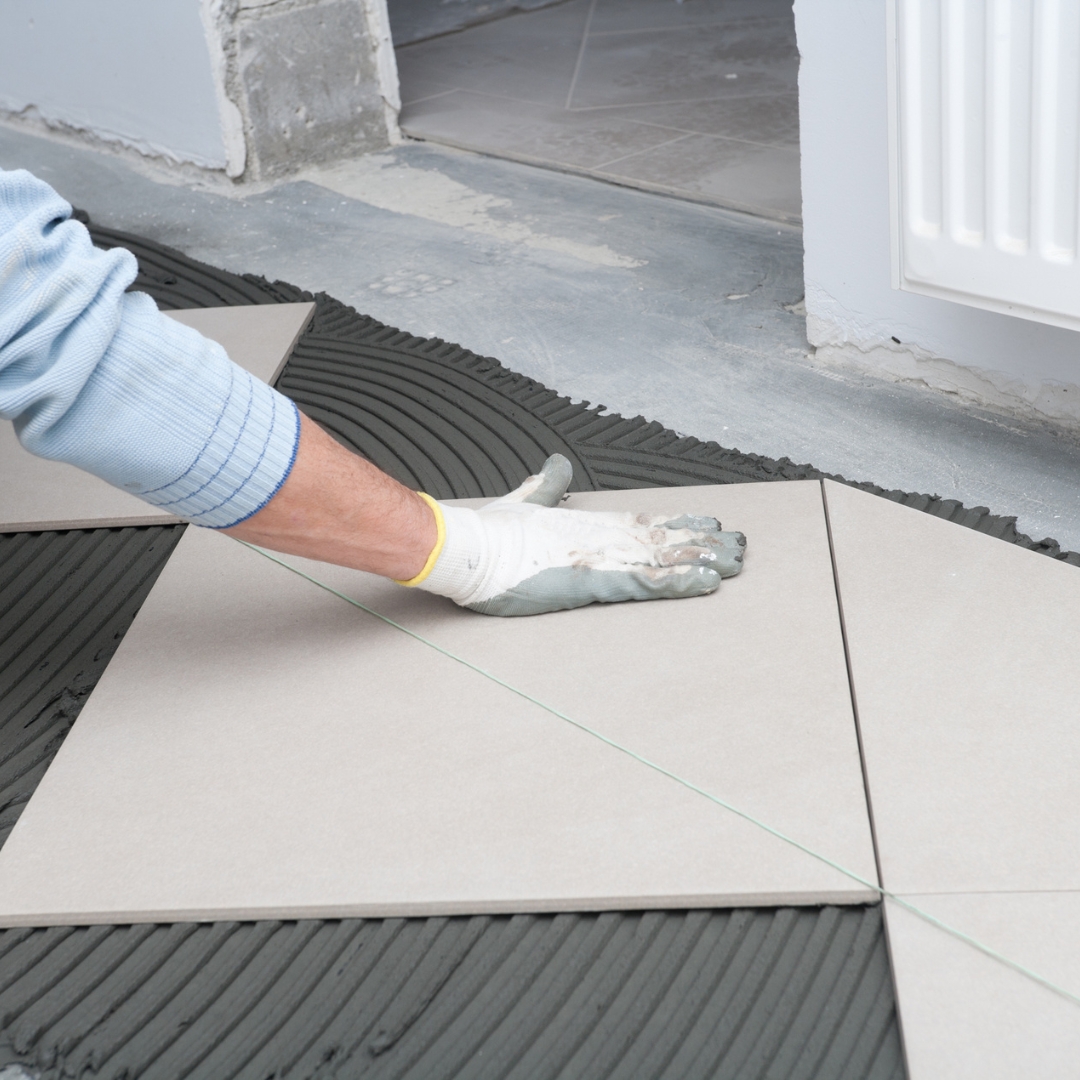FAQs
Welcome to our FAQ page, your go-to resource for quick answers to common questions. We understand that you may have queries regarding our products and services. Our concise FAQ section provides valuable information on installation, maintenance tips, and product details. If you can't find what you're looking for, our friendly team is ready to assist you personally.FAQ
- HOME
- FAQ
Ceramic Tile vs. Porcelain Tile: Unveiling the Perfect Fit for Your Project
When it comes to choosing the right tile for your project, the options can be overwhelming. Ceramic tile and porcelain tile are two popular choices that offer durability, versatility, and aesthetic appeal. To help you make an informed decision, let's dive into the differences, similarities, pros, and cons of these two materials, using a metaphor to illustrate their unique characteristics.
Think of ceramic tile as the reliable and stylish workhorse, while porcelain tile is the sturdy and sophisticated powerhouse.
Composition and Manufacturing:
Ceramic Tile: Ceramic tiles are made of a mixture of clay, minerals, and water. They are kiln-fired at lower temperatures, resulting in a porous structure.
Porcelain Tile: Porcelain tiles are crafted from refined clay, sand, and other natural materials. They undergo a high-temperature firing process, creating a dense and non-porous composition.
Ceramic tile is akin to a fashionable fabric that breathes, while porcelain tile is more like a solid shield.
Durability and Strength:
Ceramic Tile: Ceramic tiles are known for their durability, making them suitable for most residential applications. However, they are more prone to chipping and cracking under heavy impact.
Porcelain Tile: Porcelain tiles, with their denser structure, exhibit exceptional strength and durability. They are highly resistant to wear, moisture, and even freezing temperatures, making them ideal for both indoor and outdoor spaces.
Ceramic tile is like a reliable sedan, while porcelain tile is akin to a rugged off-road vehicle that can conquer any terrain.
Water Absorption and Stain Resistance:
Ceramic Tile: Due to its porous nature, ceramic tile has a higher water absorption rate. It is recommended for areas with minimal moisture exposure and may require sealing to prevent stains.
Porcelain Tile: Porcelain tile's low water absorption rate makes it highly resistant to stains and water damage. Its non-porous surface allows for easy cleaning and maintenance, making it ideal for bathrooms, kitchens, and high-traffic areas.
Ceramic tile is comparable to a cotton fabric that requires extra care, while porcelain tile is like a water-resistant material that repels stains effortlessly.
Design and Style:
Ceramic Tile: Ceramic tiles offer a vast array of colors, patterns, and textures, allowing for endless design possibilities. They are versatile and can be used to create various aesthetics, from classic to contemporary.
Porcelain Tile: Porcelain tiles often mimic the look of natural stone or wood with remarkable realism. They offer a sophisticated and luxurious appearance, making them a popular choice for high-end projects.
Ceramic tile is like an artist's palette, offering countless shades, while porcelain tile resembles a skilled craftsman's creation, imitating nature flawlessly.
Choosing between ceramic tile and porcelain tile depends on your specific needs and project requirements. Ceramic tile offers a wide range of design options, durability, and affordability, while porcelain tile boasts exceptional strength, low maintenance, and a luxurious appeal. Consider your desired aesthetics, location, and level of foot traffic to determine which tile will best suit your project. Just like selecting the perfect metaphor, finding the right tile will ensure your space tells a captivating story of beauty, resilience, and functionality.
Think of ceramic tile as the reliable and stylish workhorse, while porcelain tile is the sturdy and sophisticated powerhouse.
Composition and Manufacturing:
Ceramic Tile: Ceramic tiles are made of a mixture of clay, minerals, and water. They are kiln-fired at lower temperatures, resulting in a porous structure.
Porcelain Tile: Porcelain tiles are crafted from refined clay, sand, and other natural materials. They undergo a high-temperature firing process, creating a dense and non-porous composition.
Ceramic tile is akin to a fashionable fabric that breathes, while porcelain tile is more like a solid shield.
Durability and Strength:
Ceramic Tile: Ceramic tiles are known for their durability, making them suitable for most residential applications. However, they are more prone to chipping and cracking under heavy impact.
Porcelain Tile: Porcelain tiles, with their denser structure, exhibit exceptional strength and durability. They are highly resistant to wear, moisture, and even freezing temperatures, making them ideal for both indoor and outdoor spaces.
Ceramic tile is like a reliable sedan, while porcelain tile is akin to a rugged off-road vehicle that can conquer any terrain.
Water Absorption and Stain Resistance:
Ceramic Tile: Due to its porous nature, ceramic tile has a higher water absorption rate. It is recommended for areas with minimal moisture exposure and may require sealing to prevent stains.
Porcelain Tile: Porcelain tile's low water absorption rate makes it highly resistant to stains and water damage. Its non-porous surface allows for easy cleaning and maintenance, making it ideal for bathrooms, kitchens, and high-traffic areas.
Ceramic tile is comparable to a cotton fabric that requires extra care, while porcelain tile is like a water-resistant material that repels stains effortlessly.
Design and Style:
Ceramic Tile: Ceramic tiles offer a vast array of colors, patterns, and textures, allowing for endless design possibilities. They are versatile and can be used to create various aesthetics, from classic to contemporary.
Porcelain Tile: Porcelain tiles often mimic the look of natural stone or wood with remarkable realism. They offer a sophisticated and luxurious appearance, making them a popular choice for high-end projects.
Ceramic tile is like an artist's palette, offering countless shades, while porcelain tile resembles a skilled craftsman's creation, imitating nature flawlessly.
Choosing between ceramic tile and porcelain tile depends on your specific needs and project requirements. Ceramic tile offers a wide range of design options, durability, and affordability, while porcelain tile boasts exceptional strength, low maintenance, and a luxurious appeal. Consider your desired aesthetics, location, and level of foot traffic to determine which tile will best suit your project. Just like selecting the perfect metaphor, finding the right tile will ensure your space tells a captivating story of beauty, resilience, and functionality.
The bending or flatness of porcelain tile
The bending or flatness of porcelain tiles is an important aspect to consider during installation. Porcelain tiles typically have a predefined level of acceptable bending or flatness that is determined by the manufacturing process. However, it's essential to check the bending/flatness before installation to ensure a smooth and visually appealing surface.
To check the bending/flatness of porcelain tiles, you can place them on a flat surface and observe if any gaps or rocking occurs. Using a straight edge or level can help identify any deviations from the desired flatness.
To avoid issues with bending/flatness, it's crucial to choose tiles from reputable manufacturers that adhere to stringent quality standards. Additionally, proper handling and storage of tiles, ensuring they are not subjected to excessive weight or pressure, can help maintain their flatness.
During installation, it's recommended to use tile leveling systems to adjust the overall surface. These systems help ensure that each tile is installed at the same level, eliminating unevenness and creating a perfectly flat and aligned surface.
Proper substrate preparation, including the use of a flat and level base, is also important. Ensuring the substrate is properly cured and leveled before tile installation can contribute to achieving a flat tile surface.
By paying attention to the bending/flatness of porcelain tiles, selecting high-quality tiles, and following proper installation techniques, you can create a visually appealing and flawless tile installation that adds beauty and functionality to your space.


To check the bending/flatness of porcelain tiles, you can place them on a flat surface and observe if any gaps or rocking occurs. Using a straight edge or level can help identify any deviations from the desired flatness.
To avoid issues with bending/flatness, it's crucial to choose tiles from reputable manufacturers that adhere to stringent quality standards. Additionally, proper handling and storage of tiles, ensuring they are not subjected to excessive weight or pressure, can help maintain their flatness.
During installation, it's recommended to use tile leveling systems to adjust the overall surface. These systems help ensure that each tile is installed at the same level, eliminating unevenness and creating a perfectly flat and aligned surface.
Proper substrate preparation, including the use of a flat and level base, is also important. Ensuring the substrate is properly cured and leveled before tile installation can contribute to achieving a flat tile surface.
By paying attention to the bending/flatness of porcelain tiles, selecting high-quality tiles, and following proper installation techniques, you can create a visually appealing and flawless tile installation that adds beauty and functionality to your space.


The anti-slip value of porcelain tiles. R9, R10 and R11
The anti-slip value of porcelain tiles is an essential consideration when selecting the right tile for different areas of your house. Anti-slip ratings are represented by R-values, with higher numbers indicating better slip resistance.
R9 porcelain tiles offer a moderate slip resistance and are suitable for areas where there is minimal exposure to water, such as bedrooms, living rooms, and dry kitchen areas.
R10 porcelain tiles provide increased slip resistance and are recommended for spaces that may occasionally be exposed to moisture, such as bathrooms, laundry rooms, and entryways. For areas prone to higher levels of moisture, such as outdoor spaces, swimming pool areas, or commercial kitchens,
R11 porcelain tiles with their high slip resistance become the ideal choice to ensure safety. By understanding the R-values and their respective applications, you can select the appropriate porcelain tiles to create beautiful, functional, and safe surfaces throughout your home.


R9 porcelain tiles offer a moderate slip resistance and are suitable for areas where there is minimal exposure to water, such as bedrooms, living rooms, and dry kitchen areas.
R10 porcelain tiles provide increased slip resistance and are recommended for spaces that may occasionally be exposed to moisture, such as bathrooms, laundry rooms, and entryways. For areas prone to higher levels of moisture, such as outdoor spaces, swimming pool areas, or commercial kitchens,
R11 porcelain tiles with their high slip resistance become the ideal choice to ensure safety. By understanding the R-values and their respective applications, you can select the appropriate porcelain tiles to create beautiful, functional, and safe surfaces throughout your home.


How long does porcelain tile installation typically take?
The duration of porcelain tile installation depends on various factors such as the size of the area, complexity of the pattern, and the experience of the installer. It is advisable to consult with a professional to assess the specific requirements and determine a realistic timeline for the installation process.
Are there any specific considerations for outdoor porcelain tile installation?
When installing porcelain tile in outdoor areas, it is crucial to use tiles specifically designed for exterior use. These tiles are typically thicker and have enhanced slip resistance to withstand outdoor conditions. Additionally, proper slope and drainage should be incorporated to prevent water accumulation and ensure longevity.
How should porcelain tile be cleaned and maintained?
Porcelain tile is known for its durability and low maintenance. Regular sweeping or vacuuming, followed by mopping with a mild detergent or a specialized tile cleaner, is usually sufficient. Avoid using abrasive cleaners or materials that could scratch the surface. Grout lines may require periodic sealing to prevent staining.
Can porcelain tile be installed on any surface?
Porcelain tile can be installed on various surfaces, including concrete, plywood, and existing tile, among others. However, it is essential to ensure that the surface is structurally sound, clean, and properly prepared before installation.
How should porcelain tile be installed?
Porcelain tile installation typically involves preparing the subfloor, applying thinset adhesive, and laying the tiles in a desired pattern. It is crucial to follow manufacturer guidelines and use appropriate tools for precise placement. Professional installation is recommended for optimal results.
